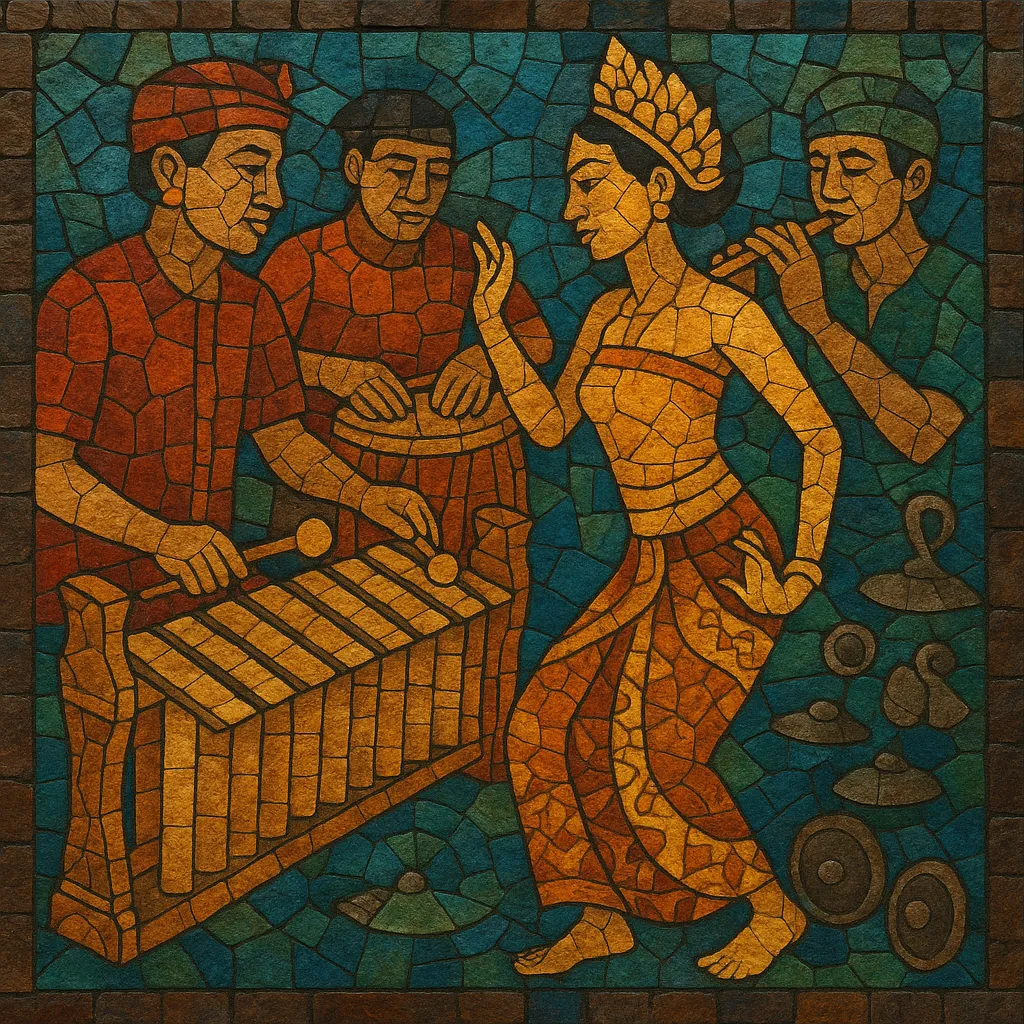Gamelan joged bumbung is a lively Balinese bamboo gamelan used to accompany the social dance known as Joged. The ensemble centers on interlocking bamboo xylophones (rindik/tingklik), small cymbals (ceng-ceng), drums (kendang), flutes (suling), and bamboo or small bronze gongs marking the cycle.
It features bright, pentatonic tunings and fast interlocking (kotekan) textures that create a shimmering, danceable groove. The music supports a flirtatious, participatory dance tradition in which a female dancer invites audience members to the floor, making the style both communal and festive.
Gamelan joged bumbung arose in Bali in the mid-20th century as a bamboo-based counterpart to more established bronze gamelan ensembles. Its development drew on long-standing Balinese practices of interlocking rhythms (kotekan) and cyclical colotomic structures, but translated these into the lighter, portable timbre world of bamboo xylophones (rindik/tingklik).
By the 1940s–1950s the ensemble became closely tied to the social dance Joged, a popular, informal performance where a solo female dancer engages the audience. The lighter instrumentation and buoyant feel of bamboo keys made the ensemble ideal for open-air festivities, temple fairs, and tourism venues. While its rhythmic energy echoes the dynamism of gong kebyar, joged bumbung emphasizes approachable melodies and grooves that support spontaneous audience participation.
Today, gamelan joged bumbung remains a staple of community events and cultural shows across Bali. University and conservatory groups document and teach the repertoire, and village sekaa (community clubs) keep the tradition vibrant. Contemporary ensembles sometimes integrate new pieces, alternative tunings, and choreographic innovations while preserving the style’s social, playful core.
Use paired bamboo xylophones (rindik/tingklik) for interlocking parts, one playing polos (core tones) and the other sangsih (complementary tones). Add kendang (lanang/wadon drum pair) for tempo and cueing, small cymbals (ceng-ceng) for drive, suling (bamboo flute) for lyrical lines, and a gong/kempur or bamboo bass to articulate the cycle.
Adopt a five-tone Balinese sléndro-like scale (often the saih gender wayang pentatonic). Build two complementary tuning sets slightly detuned from each other to create the characteristic Balinese shimmer (ombak). Compose melodies that outline the mode’s core tones and leave space for ornamental slides and grace notes.
Write cyclical pieces with clear colotomic markers (gong at cycle end, smaller punctuations mid-cycle). Use kotekan interlocking between polos and sangsih to generate fast, sparkling textures. Keep tempos medium to brisk, with the kendang leading changes, stops (angsel), and transitions to match the dancer’s cues.
Structure pieces with an opening (pemungkah), a main section (pengawak) featuring stable groove and melody, and a faster, more playful closing (pengecet). Insert angsel breaks to coordinate dancer–musician interaction and to energize the audience.
Balance the ensemble so bamboo keys remain bright but not harsh. Encourage responsive playing—kendang should follow and cue the dancer, not just keep time. Ornament suling and upper rindik lines tastefully, and maintain tight, even kotekan so the interlock shimmers rather than clutters.


